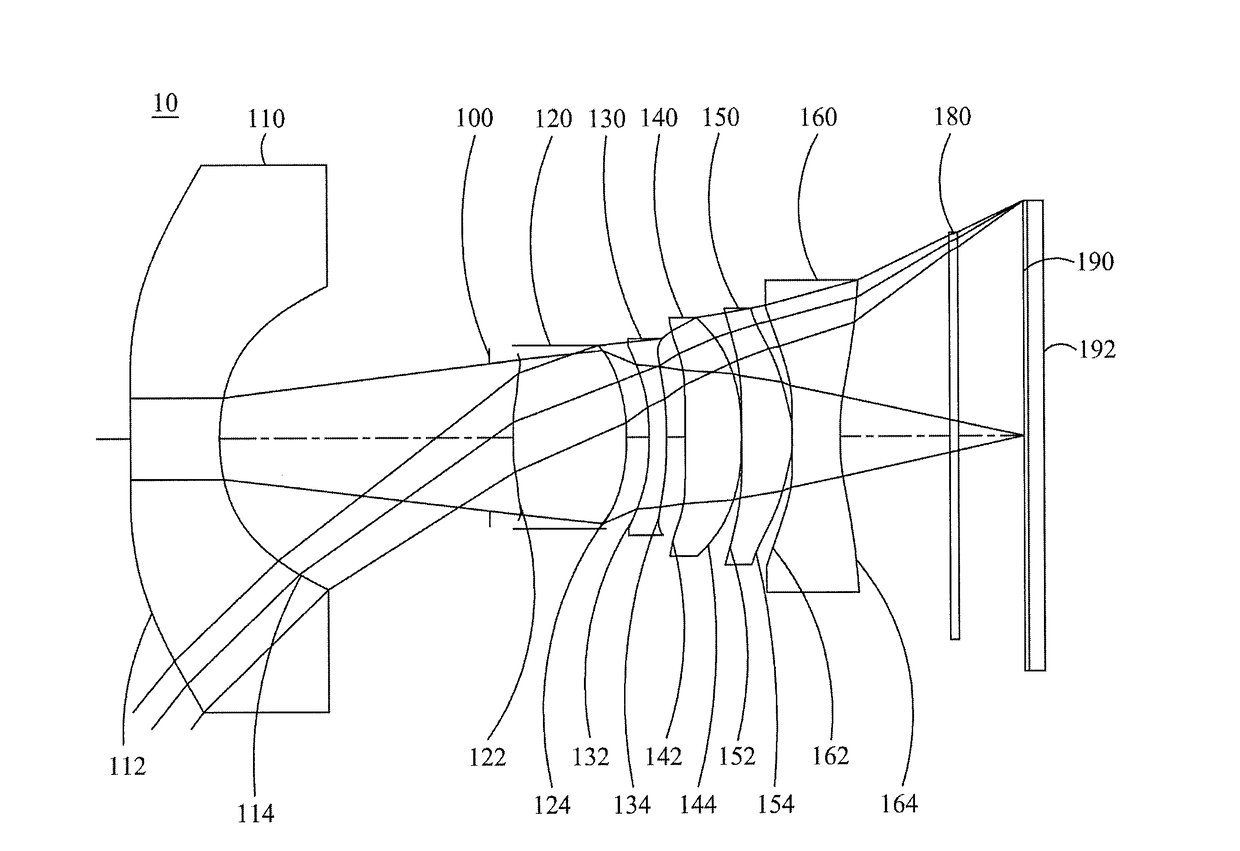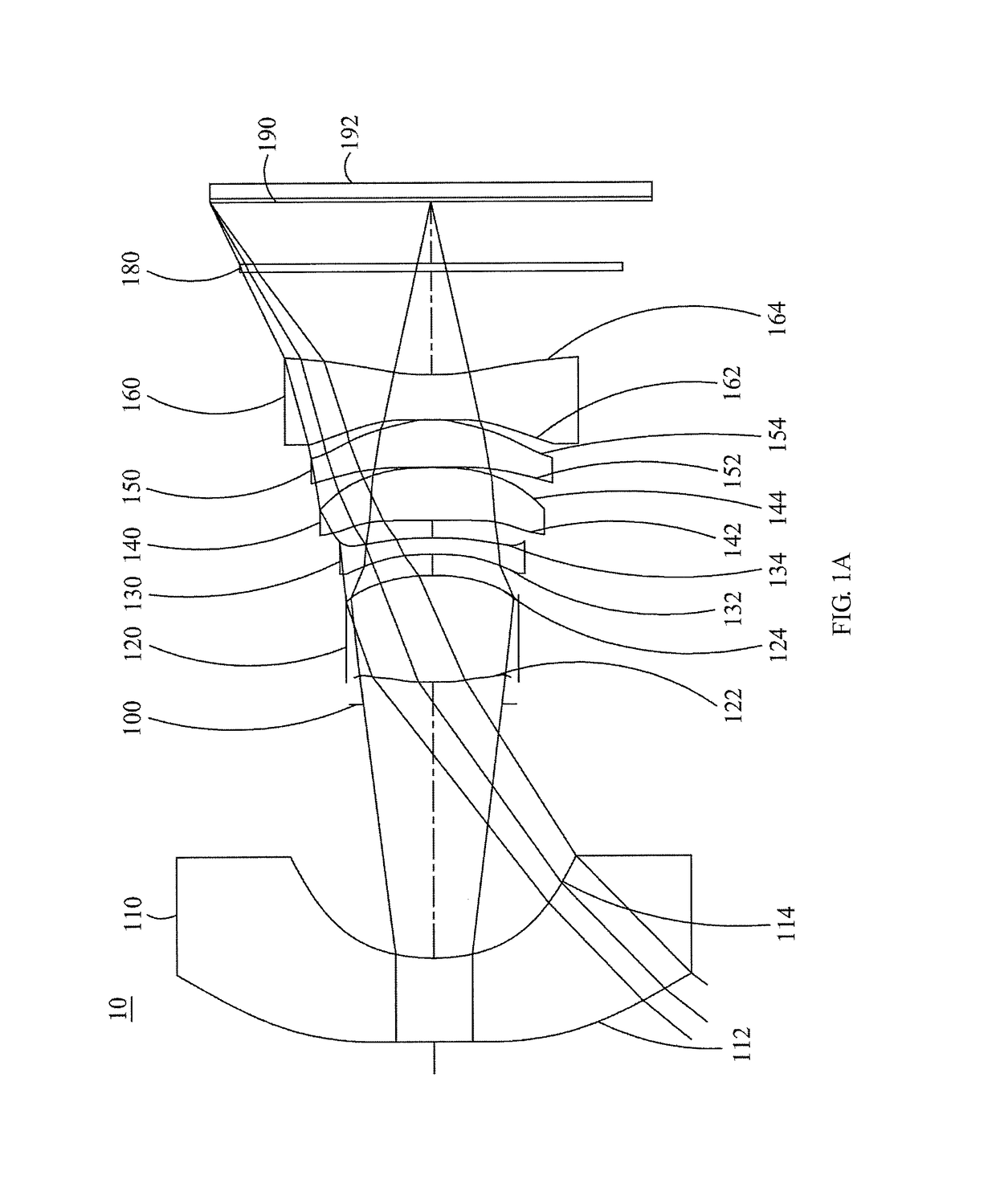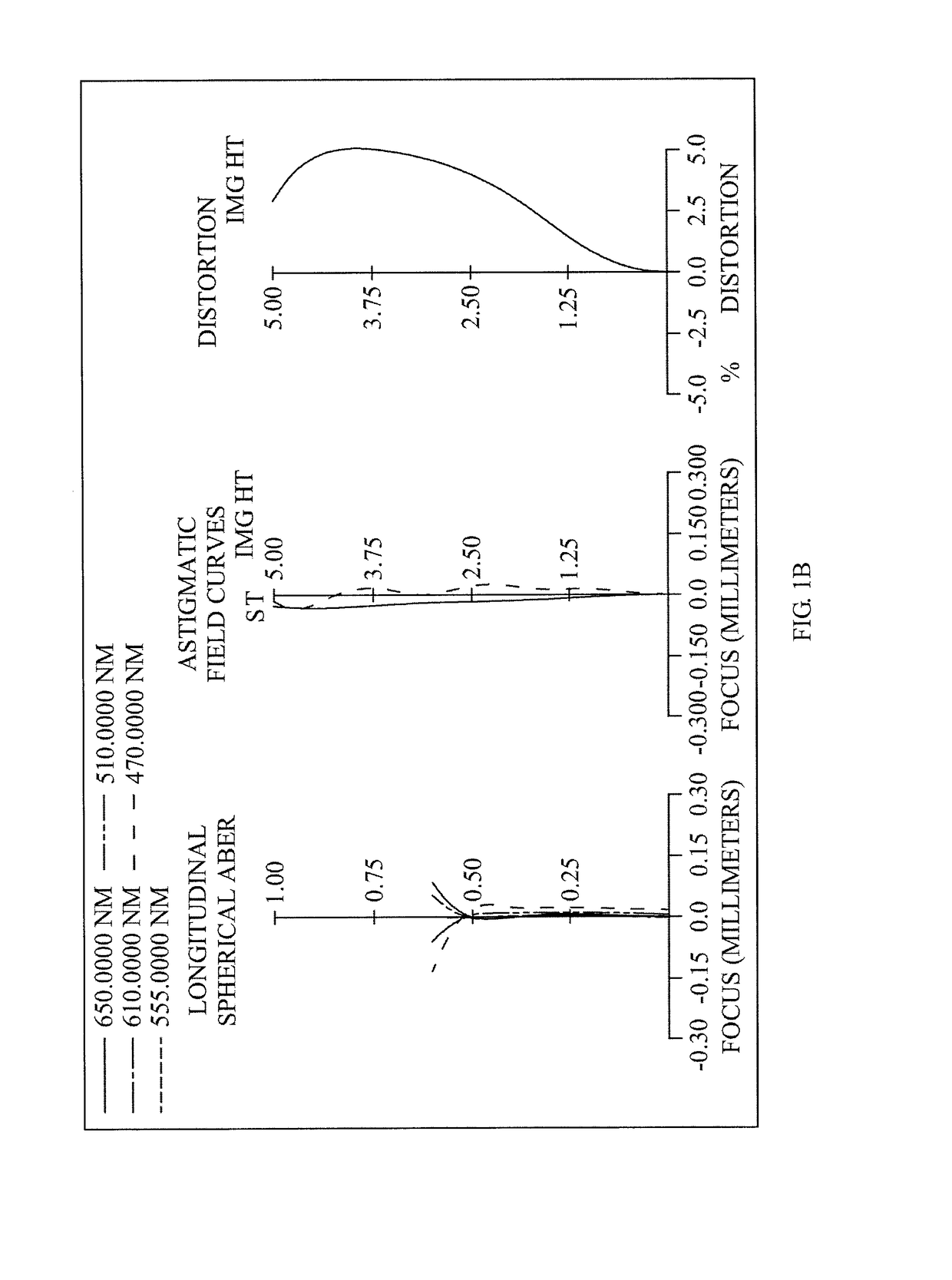Optical image capturing system
an image capturing and optical technology, applied in the field of can solve the problems that conventional optical image capturing systems may not be sufficient to meet those advanced photography requirements, and achieve the effects of reducing the height of the optical system, reducing the back focal length and reducing the aberration of the optical image capturing system
- Summary
- Abstract
- Description
- Claims
- Application Information
AI Technical Summary
Benefits of technology
Problems solved by technology
Method used
Image
Examples
first embodiment
The First Embodiment
[0095]Please refer to FIG. 1A and FIG. 1B, wherein FIG. 1A is a schematic view of the optical image capturing system according to the first embodiment of the present invention and FIG. 1B shows the longitudinal spherical aberration curves, astigmatic field curves, and optical distortion curve of the optical image capturing system in the order from left to right according to the first embodiment of the present invention. FIG. 1C is a characteristic diagram of modulation transfer of visible light spectrum according to the first embodiment of the present disclosure. As shown in FIG. 1A, in order from an object-side surface to an image-side surface, the optical image capturing system includes a first lens 110, an aperture 100, a second lens 120, a third lens 130, a fourth lens 140, a fifth lens 150, a sixth lens 160, an Infrared filter 180, an image plane 190, and an image sensing device 192.
[0096]The first lens 110 has negative refractive power and is made of plasti...
second embodiment
[0163]Please refer to FIG. 2A and FIG. 2B, wherein FIG. 2A is a schematic view of the optical image capturing system according to the second embodiment of the present invention and FIG. 2B shows the longitudinal spherical aberration curves, astigmatic field curves, and optical distortion curve of the optical image capturing system in the order from left to right according to the second embodiment of the present invention. FIG. 2C is a characteristic diagram of modulation transfer of visible light spectrum according to the second embodiment of the present disclosure. As shown in FIG. 2A, in the order from the object-side surface to the image-side surface, the optical image capturing system includes a first lens 210, a second lens 220, a third lens 230, an aperture 200, a fourth lens 240, a fifth lens 250, a sixth lens 260, an Infrared filter 280, an image plane 290, and an image sensing device 292.
[0164]The first lens 210 has positive refractive power and is made of plastic material....
third embodiment
[0175]Please refer to FIG. 3A and FIG. 3B, wherein FIG. 3A is a schematic view of the optical image capturing system according to the third embodiment of the present invention and FIG. 3B shows the longitudinal spherical aberration curves, astigmatic field curves, and optical distortion curve of the optical image capturing system in the order from left to right according to the third embodiment of the present invention. FIG. 3C is a characteristic diagram of modulation transfer of visible light spectrum according to the third embodiment of the present disclosure. As shown in FIG. 3A, in the order from an object-side surface to an image-side surface, the optical image capturing system includes a first lens 310, a second lens 320, a third lens 330, an aperture 300, a fourth lens 340, a fifth lens 350, a sixth lens 360, an Infrared filter 380, an image plane 390, and an image sensing device 392.
[0176]The first lens 310 has positive refractive power and is made of plastic material. The ...
PUM
 Login to View More
Login to View More Abstract
Description
Claims
Application Information
 Login to View More
Login to View More - R&D
- Intellectual Property
- Life Sciences
- Materials
- Tech Scout
- Unparalleled Data Quality
- Higher Quality Content
- 60% Fewer Hallucinations
Browse by: Latest US Patents, China's latest patents, Technical Efficacy Thesaurus, Application Domain, Technology Topic, Popular Technical Reports.
© 2025 PatSnap. All rights reserved.Legal|Privacy policy|Modern Slavery Act Transparency Statement|Sitemap|About US| Contact US: help@patsnap.com



